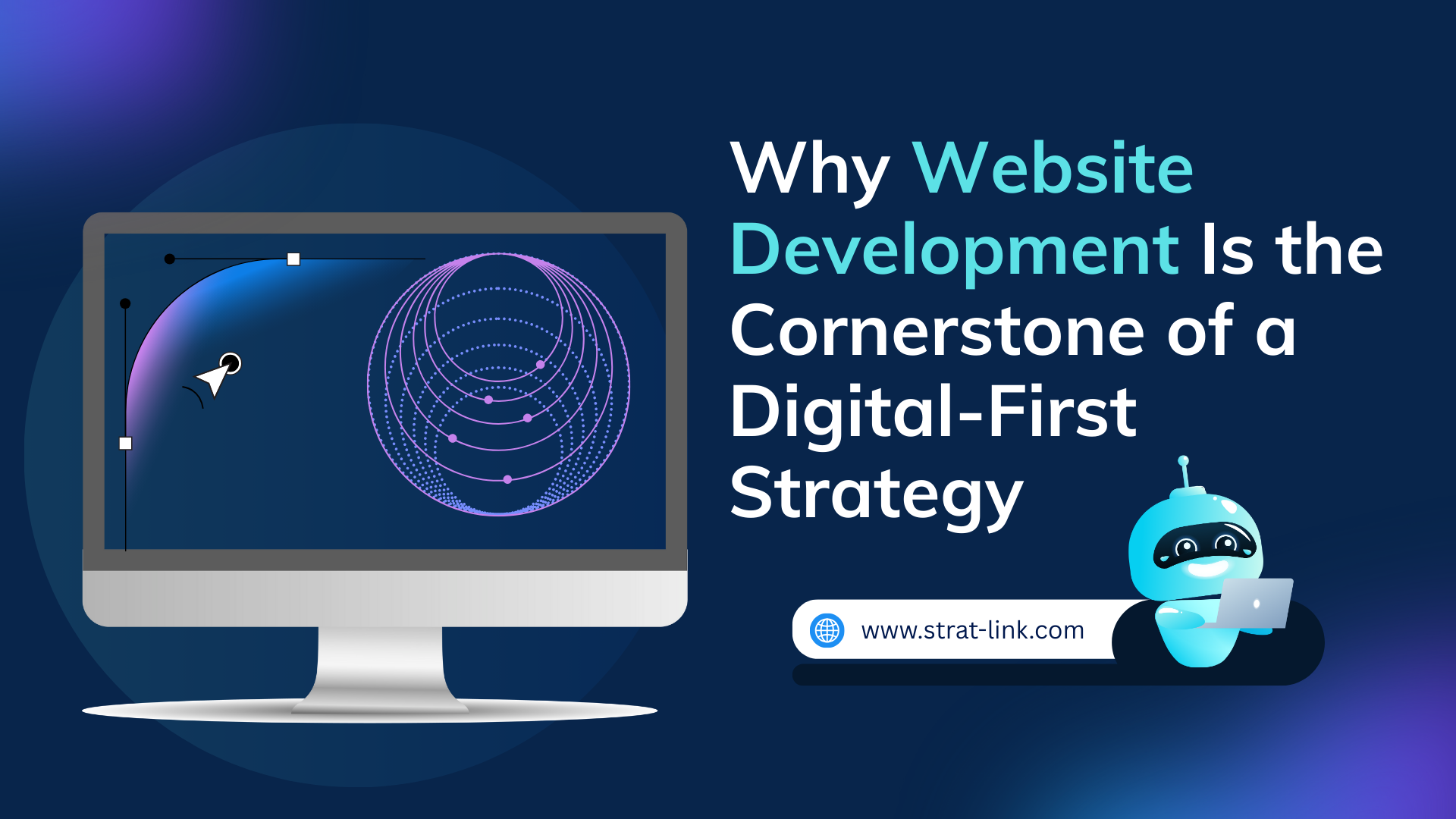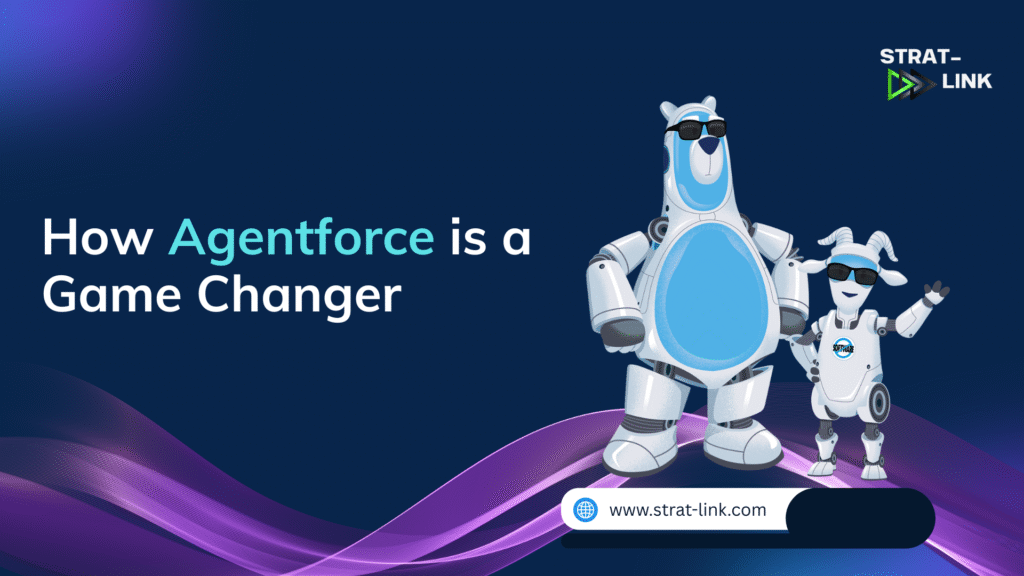
Stop losing leads to slow sites. Our website development services turn clicks into customers—with speed, style, and strategy.
- Introduction: Welcome to the Digital-First Era
- The STRAT-LINK Approach: Building With Purpose
- Defining “Digital-First” — More Than Just Buzzwords
- The Website: More Than a Digital Business Card
- First Impressions Happen Online
- A 24/7 Touchpoint for Your Brand
- Central Hub of All Digital Channels
- Website vs. Social Media: Who Owns What?
- Credibility Starts With a Solid Web Presence
- User Experience: The Silent Salesperson
- Mobile-First, Not Mobile-Second
- SEO Foundations Are Built on Web Architecture
- Data Capture and Integration with MarTech
- The Role of Speed, Security, and Stability
- Custom Development vs. Templates: What’s the Right Fit?
- Scalable Architecture Enables Future Growth
- Accessibility Is Not Optional
- Content Management Systems: Backbone of Agility
- Measuring Success: Analytics and KPIs
- A Website as a Sales Enablement Tool
- Future-Proofing Through Iterative Development
- Conclusion: Don’t Just Build a Site, Build a Digital Future
- Frequently Asked Questions
Introduction: Welcome to the Digital-First Era
We are living in an era where the first customer interaction often takes place in a digital space—long before any email is sent, phone call is made, or handshake exchanged. This is the digital-first era. It’s a business landscape defined by immediacy, mobility, and interconnectedness.
Here, success depends not just on what you offer but how and where you offer it. And at the heart of this transformation lies one unshakeable truth: your website is your most critical digital asset. It’s not just a digital footprint—it’s the strategic foundation upon which your entire digital-first strategy is built.
The STRAT-LINK Approach: Building With Purpose
At STRAT-LINK, we approach website development as an intersection of strategy, storytelling, and engineering. We go beyond pixel-perfect design—we build performance-first, scalable, accessible, and integrated web platforms tailored to business goals.
We don’t just code. We collaborate, architect, prototype, and optimize. Every line of code is backed by strategic rationale. Every user journey is designed to convert.
Defining “Digital-First” — More Than Just Buzzwords
“Digital-first” doesn’t mean abandoning traditional channels—it means leading with digital thinking. It’s a strategic posture that places digital platforms, tools, and experiences at the forefront of business operations, customer interactions, and brand evolution. For digitally mature organizations, the website isn’t just a tool; it’s the operational nucleus. It’s where branding, messaging, product discovery, lead nurturing, and customer service converge.
To be digital-first means your website isn’t an afterthought—it’s the launchpad for every campaign, conversation, and conversion.
The Website: More Than a Digital Business Card
Let’s be clear: your website is not a digital brochure or static placeholder. It is a dynamic, interactive, and measurable platform that evolves in lockstep with your business objectives. It’s where value is communicated, trust is cultivated, and decisions are influenced. It’s also where prospective clients form lasting impressions—consciously or not—based on performance, content, usability, and design.
Modern websites aren’t passive—they’re performative. They drive action, collect data, personalize content, and continuously iterate. And if your website is still operating like a virtual pamphlet, it’s time for a rethink.
First Impressions Happen Online
Research shows that it takes about 0.05 seconds for users to form an opinion about your site. That’s faster than a blink—and once that impression is formed, it’s hard to reverse. In a hyper-competitive digital marketplace, you rarely get a second chance.
An outdated or poorly designed website signals neglect. It raises questions: Can I trust this company? Will their product or service be as disjointed as their site? On the flip side, a fast, modern, and visually cohesive website establishes authority and builds immediate confidence. The experience your website delivers reflects the experience your brand promises.
A 24/7 Touchpoint for Your Brand
Unlike your sales or support team, your website doesn’t have working hours. It never sleeps, and it never takes weekends off. It’s your around-the-clock brand representative, accessible from anywhere in the world. Whether it’s 3 a.m. or a national holiday, your website is available to inform, assist, convert, and reassure.
In this sense, your website becomes the most consistent and dependable touchpoint in your customer lifecycle. It’s always on, always accurate, and always working toward your business goals.
Central Hub of All Digital Channels
Think of your digital strategy as a wheel. Paid ads, social media, email campaigns, and content marketing efforts are the spokes. But the hub—the core where everything connects—is your website. It’s the destination your marketing efforts drive toward.
When people click on a social ad, they land on a page. When they read an email, they’re nudged toward a link. When they Google a query, your organic result takes them to a blog or landing page. Everything funnels back to your site. That’s why investing in web development is not just a tech choice—it’s a strategic imperative.
Website vs. Social Media: Who Owns What?
Let’s be honest—social media is powerful. But it’s also rented ground. Algorithms change, policies shift, and audiences can disappear overnight. You are at the mercy of platforms you do not control.

Your website, on the other hand, is digital real estate you own. It’s impervious to third-party whims. You control the content, the experience, the analytics, and the monetization. In a world that’s increasingly unpredictable, owning your platform is not just smart—it’s necessary.
Credibility Starts With a Solid Web Presence
In the absence of physical interactions, your website becomes the anchor of your credibility. A polished, fast, and functional website conveys professionalism, legitimacy, and reliability. Poorly constructed sites send the opposite signal—instilling doubt, hesitation, and mistrust.
Think about the last time you visited a poorly built site. You probably clicked away in seconds. Your customers will do the same. Building credibility in the digital world begins with building a website that reflects the seriousness of your enterprise.
User Experience: The Silent Salesperson
Great UX doesn’t shout—it guides. It subtly and silently leads your visitors through a journey that makes sense to them. From intuitive navigation and clear information architecture to compelling CTAs and logical page flows—user experience is the difference between confusion and conversion.
It’s not enough to look good. Your site needs to feel good. Every click should feel deliberate. Every scroll should provide clarity. When users find what they need without effort, trust builds—and conversions follow.
Mobile-First, Not Mobile-Second
We live in a multi-device world, and mobile isn’t a secondary channel anymore. It’s often the primary screen your audience uses. According to Statista, mobile devices accounted for over 60% of global website traffic in 2024—and that number is still climbing.
If your site isn’t responsive, thumb-friendly, and optimized for smaller screens, you’re alienating more than half of your potential audience. A mobile-first design philosophy ensures that your user experience is consistently excellent—regardless of device.
SEO Foundations Are Built on Web Architecture
Search Engine Optimization (SEO) is not just about keywords. It’s about structure, performance, and crawlability. Google’s algorithms favor websites that are technically sound—clean code, semantic HTML, fast load times, and logical hierarchies.
Effective website development is foundational to any SEO strategy. Your rankings don’t rise on content alone—they rise on infrastructure. Without proper development, even the best content will be buried in the depths of search results.
Data Capture and Integration with MarTech
A well-developed website is a data powerhouse. It can capture form submissions, user journeys, click paths, engagement levels, and intent signals. And when integrated with marketing technologies like CRMs, automation tools, and analytics platforms, it becomes a powerful engine for decision-making.
Web development isn’t just about aesthetics—it’s about data pipelines, tracking pixels, and intelligent user flows. It’s about aligning your site with the technologies that drive modern marketing.
The Role of Speed, Security, and Stability
Speed matters—47% of users expect a web page to load in under 2 seconds. Slow websites bleed revenue. Likewise, security breaches destroy trust. If your site is vulnerable to malware, data leaks, or downtime, you’re gambling with brand reputation.
Website development must prioritize performance optimization, SSL certification, server reliability, and backup strategies. It’s not just about uptime—it’s about peace of mind.
Custom Development vs. Templates: What’s the Right Fit?
Off-the-shelf templates may offer speed and affordability, but they come with limitations—limited flexibility, bloated code, and generic design. Custom development, on the other hand, aligns with your brand, scales with your growth, and integrates with your systems.
While templates serve short-term needs, custom development builds long-term advantage. It’s the difference between a prefab box and a purpose-built smart building.
Scalable Architecture Enables Future Growth
Businesses grow. Offerings expand. Teams scale. Can your website handle that evolution? A scalable architecture ensures you don’t outgrow your digital foundation.
Whether it’s adding e-commerce functionality, launching new language versions, or integrating AI-powered tools—your site should be prepared to scale up without breaking down.
Accessibility Is Not Optional
15% of the global population lives with some form of disability. Web accessibility isn’t just a compliance checkbox—it’s a reflection of your values. A truly inclusive website accommodates all users, regardless of ability.
Screen readers, alt tags, keyboard navigation, and high-contrast interfaces are essential. Accessibility is not just good practice—it’s good business.
Content Management Systems: Backbone of Agility
Your marketing team shouldn’t need to code. With a robust CMS like WordPress, Drupal, or Headless CMS solutions, you gain agility. Launch a campaign in hours, not days. Update content in minutes, not weeks.
A well-structured CMS empowers your teams and accelerates go-to-market velocity.
Measuring Success: Analytics and KPIs
What gets measured gets improved. Your website should track KPIs like bounce rate, conversion rate, user paths, and traffic sources. These insights help fine-tune your messaging, improve UX, and increase ROI.
Advanced analytics tools can even uncover friction points and optimize funnels in real time. A data-driven website isn’t a luxury—it’s a necessity.
A Website as a Sales Enablement Tool
A strategic website doesn’t just inform—it persuades. It addresses objections, demonstrates value, and builds urgency. Sales enablement content—FAQs, whitepapers, comparison tools, ROI calculators—empowers buyers and accelerates decision-making.
Your website is part of your sales team. Equip it to close.
Future-Proofing Through Iterative Development
The digital world is in perpetual motion. Algorithms change, devices evolve, expectations rise. A future-proof website isn’t built once and forgotten. It’s developed iteratively—through feedback loops, heatmaps, testing, and continuous improvement.
Development is not a destination. It’s an ongoing strategy.
Conclusion: Don’t Just Build a Site, Build a Digital Future
Your website is not just a box to tick—it’s the cornerstone of your brand’s digital destiny. In a digital-first world, it defines perception, facilitates growth, and anchors strategy. It’s where your audience goes to learn, evaluate, and decide.
Done right, your website becomes your most valuable employee—available 24/7, generating leads, engaging customers, and telling your story. Don’t cut corners. Build it right. Build it for scale. Build it for impact.
STRAT-LINK is here to help you build not just websites, but resilient digital ecosystems that move your business forward.
Frequently Asked Questions-Website Development
1. What is website development and why is it important for business growth?
Website development refers to building, designing, and maintaining websites for online presence. It’s crucial for business growth because it creates a digital storefront, boosts brand credibility, supports lead generation, and enables 24/7 customer engagement.
2. How does a well-developed website improve customer experience?
A professionally developed website offers fast loading, mobile responsiveness, easy navigation, and personalized content—ensuring a smooth user experience that increases trust, engagement, and conversions.
3. What features should a modern business website include?
A modern website should have responsive design, clear CTAs, SEO optimization, fast loading speed, integrated analytics, secure hosting (SSL), and CMS flexibility to support business scalability and user needs.




